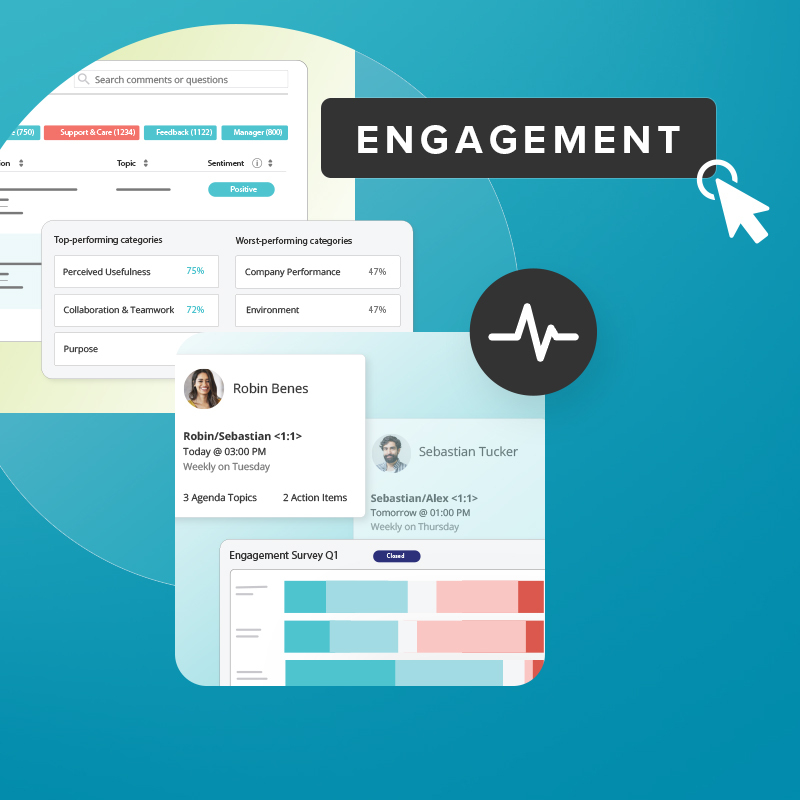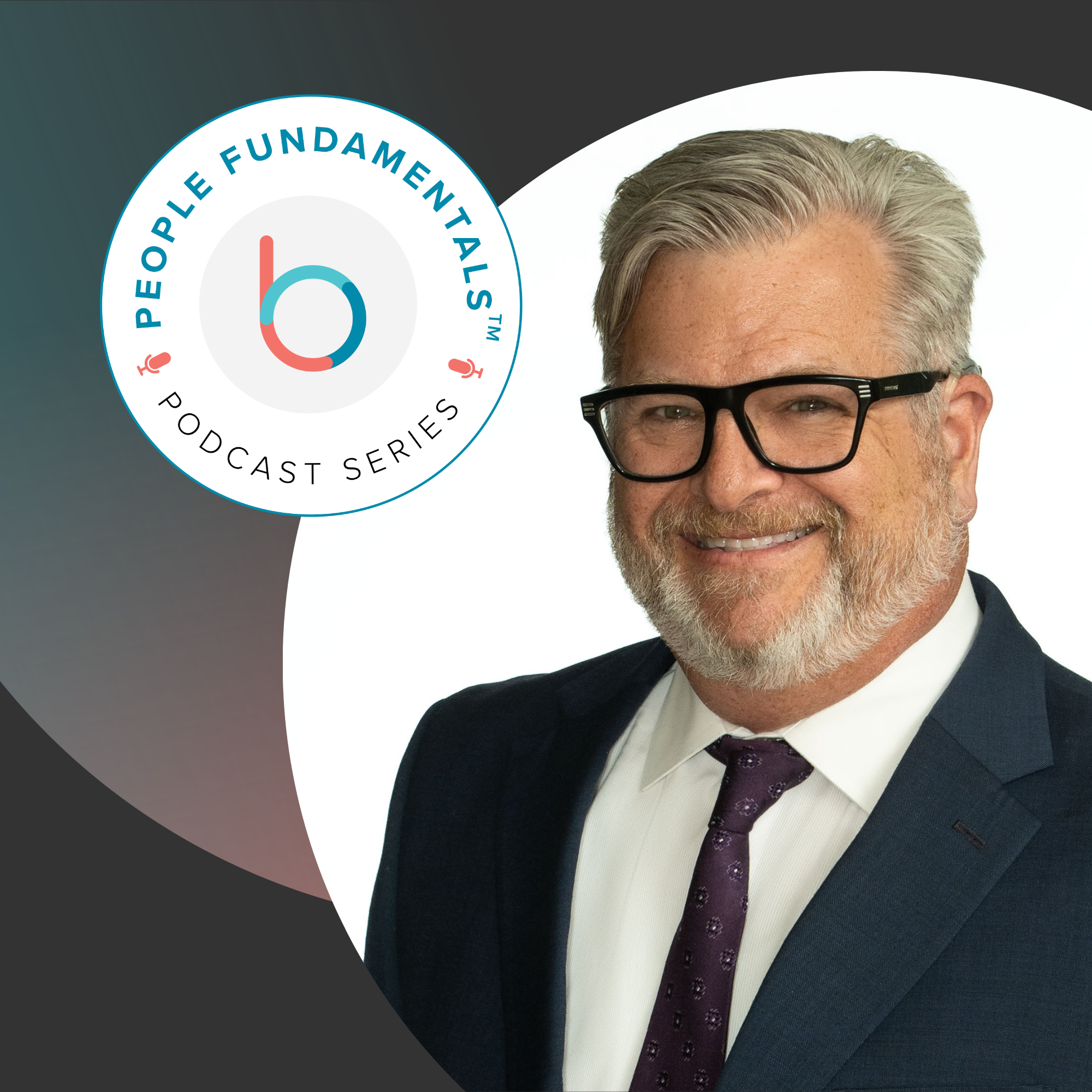It’s no surprise that performance management processes and the technology supporting them are often maligned by employees, managers, and HR alike.
Employees often disdain them because performance reviews can be anxiety-producing and time consuming to prepare for. It’s often difficult to recall the specific accomplishments achieved over the past six or 12 months. And, these processes are typically backward-looking and tied to performance ratings that may have bias baked into the process, even if inadvertent.
Managers dislike them for many of the same reasons. In addition, performance review processes suck up a tremendous amount of time at certain times of the year, can be challenging conversations, and don’t necessarily contribute toward strengthening manager-employee relationships.
For HR, the processes can be not only time consuming, but costly. These costs are both direct and indirect in the form of lost productivity while much of the organization, including HR, is engaged in the annual or semi-annual ritual.
The technology to support performance management should be in the service of the organization and its people – making the process easy, efficient, valuable for all parties, and fair.
But in fact, recent research by Betterworks found that having the wrong technology is often worse than none at all. The right technology is foundational to modern, continuous performance management. These findings are laid out in our ebook, What Employees Want From Performance Management Technology.
Most of us are familiar with the saying “Insanity is doing the same thing over and over again and expecting different results.” How do you bring sanity back to the practice of performance management? How do you establish a framework that promotes an employee-first experience and helps your organization achieve better business outcomes? Let’s explore the key findings and the path to a sensible alternative.
Employees have the wrong technology tools
Our survey showed that while 70% of employees use some kind of dedicated performance management technology, it’s insufficient for goal-setting and regular feedback — whether between employees and managers or between colleagues. Organizations with HCM (HRIS) systems that have a performance management component shouldn’t assume that they’ve conquered this problem — 80% of employees say these multi-function systems are not getting the job done.
Having the wrong technology was worse than having no technology at all. Across all measures — strategic alignment with company objectives, productivity, and engagement — employees using performance management platforms they did not like had the lowest percentage of success.
‘What Employees Want From Performance Management Technology’ eBook
Goal setting, development, feedback, and recognition are poor
Among respondents who told us they have access to goal-setting and feedback software, 70% feel the technology falls short and don’t like the platform. While 68% of employees have access to software dedicated to documenting their career aspirations, only 1 in 3 say their career and development planning platform is helpful. If employees can’t properly tie goals to achievement and can’t document and highlight their accomplishments and learnings, how can they properly plan for career development?
Recognition is also lacking, even though it has a tremendous impact on employee well-being, engagement, and retention according to Gallup. In its recent research, Gallup found that 80% of employees who feel they get the right amount of recognition are engaged versus 21% who say they don’t receive adequate recognition. According to Betterworks research, nearly two-thirds of employees wish they had a platform for more easily giving and receiving recognition.
These gaps — whether due to inadequate technology or a lack of it — represent an opportunity for companies to use the right technology to deliver on strategic business goals and help employees engage in work they feel is both rewarding and enables them to grow professionally.
Related content: Employee Recognition Ideas to Drive Better Goal Alignment
Employees want coaching but the tools are lacking
Modern performance management is really not about managing employees. It is focused on helping them excel in their roles, stay on track with strategic business objectives, grow personally and professionally, and be recognized and rewarded for their accomplishments (as well as recognize others). The ability to have substantive work relationships is the thread that weaves these together. And no work relationship is more important than the one between manager and employee.
Our research confirms that employees want regular coaching from their managers on goals and careers. These typically take place through ongoing check-ins. Employees receiving feedback monthly or more often account for 46% of respondents in our survey. Yet, only 39% of employees told us that check-ins are working for them. Structure and frequency were the top two issues, which may explain why only 20% of employees feel they are tasked to work on the right things.
Imagine yourself as the coach of a team. Coaches by nature are continually instructing and guiding players, helping them individually and as a team to readjust their strategies and try different plays. If one is struggling mentally or with their physical performance, the coach is right there to talk them through it, offer suggestions, or give them space to collect themselves. The results may be immediate or they may take some time. But, the purpose is always to make the situation better for the individual and the team so that everyone can excel and win.
Using this analogy in business, if employees want more or better coaching, wouldn’t it be in the organization’s best interest to use the right tools to deliver this capability? In an unpredictable and quickly evolving business environment, where the needs and goals of the business can shift overnight, you need technology tools that help your people flex and stay on track with their work and development, to know where they stand, and have the ability to flexibly adjust.
Related content: How Goals and Conversations Empower Employee Performance
Career development is taking a hit
Without the right technology for goal-setting and productive check-ins, career development — which is consistently cited by employees as a top five priority according to many independent surveys — suffers. Yet, according to our research, more than half of employees don’t discuss career development more than once a quarter, and some not at all. On top of that, fewer than half say they have the right tools to track career growth. A dedicated performance management tool that establishes flexible goal-setting and regular employee-manager conversations about goals, skills, and development – as well as enables these to be documented — will naturally promote more emphasis on career development.
Managers are raising their hand for better technology
Managers have been under the microscope, especially recently. They are tasked with maintaining team cohesion, keeping their direct reports focused and on track, and juggling the complexities of remote, hybrid, and distributed teams while also dealing with lingering pandemic-related stress among their people. Plus, they have their own work to do on top of these increasingly complex management responsibilities.
Several studies have pointed out that managers are the key lever in the employment relationship – and that bad managers are the reasons why employees leave. While our purpose here is not to debate this point, it is clear that managers need help.
Managers want technology that will help them be more effective. Our survey reveals that the top capabilities they want from technology tools are:
- Upskilling and reskilling
- Flexible goal setting
- Better feedback and recognition
- Improved communications
- More support for check-ins
The right tools: dedicated and in the flow of work
Our survey results, along with Gallup’s research, point to the need for a continuous performance management solution that encompasses point-in-time feedback (assessing how a project or task was handled) from across the organization, forward-looking coaching (focused on problem-solving, future goals and development), and regular conversations with managers.
These tools must also be a light lift for employees if they’re to be adopted. Employees want to be able to easily and quickly adjust goals, have conversations with their manager, request and provide feedback form peers, and celebrate accomplishments through recognition — all within the applications they work in day on and day out. Logging in and out of a separate system to perform these activities is cumbersome and inefficient.
Shortcomings of HCM systems
Large, multi-function HCM (HRIS) systems did not fare well in our survey. Respondents who did not have a dedicated platform described their tools as limited, useless, old-fashioned, unimaginative, and restrictive. Only 20% said their current HCM system meets the needs of the team and even fewer said these systems were capable of supporting goal-tracking and feedback.
Most shockingly in our survey, we found that having the wrong technology was worse than having no technology at all. Across all measures — strategic alignment with company objectives, productivity, and engagement — employees using performance management platforms they did not like had the lowest percentage of success.
Only 20% said their current HCM system meets the needs of the team and even fewer said these systems were capable of supporting goal-tracking and feedback.
‘What Employees Want From Performance Management Technology’ eBook
How to select the right performance management technology
Take the time and effort to ensure that you choose the right solution — one that meets your employees’ needs, promotes a people-first experience, and helps you achieve strategic business outcomes. Among the factors to consider in a best-in-class solution are:
- Dedicated tools: A modern performance management solution is not solely backward-looking and compliance-driven. It improves the experience of work by incorporating processes and tools into the way employees work every day, including flexible goal-setting, check-ins, peer feedback, and recognition. In addition, the right platform helps HR ensure that it can cultivate a positive experience for employees, in part by making sure employees feel heard.
- Consumer-grade experiences in the flow of work: Employees expect the tools they use to help them do their work better. Intuitive and engaging tools that employees can tap into in the flow of work are more likely to be adopted, and thus become a habit in employees’ lives.
- Templates and best-practices are embedded in the tools: Conversation templates enable data-driven, deeper and higher-quality conversations that in turn improve culture, performance, and professional growth.
- Leverages AI to better support managers and employees: Consider how tools incorporate AI and machine learning. These technologies should eliminate bias, help managers provide constructive feedback, and enable employees to write better objectives and key results, among others.
- Adoption across the entire employee base: Everyone in your organization, including employees with disabilities, should have access to the technology. Your solution should be mobile-enabled and should easily scale across your entire employee base, regardless of geographic location and whether employees are at a desk or deskless.
Learn more about our technology findings by downloading the comprehensive ebook, What Employees Want From Performance Management Technology.


